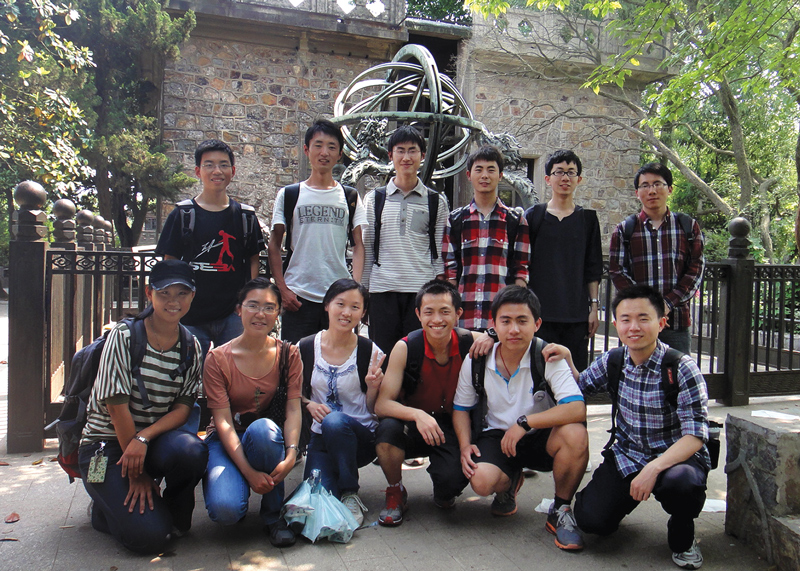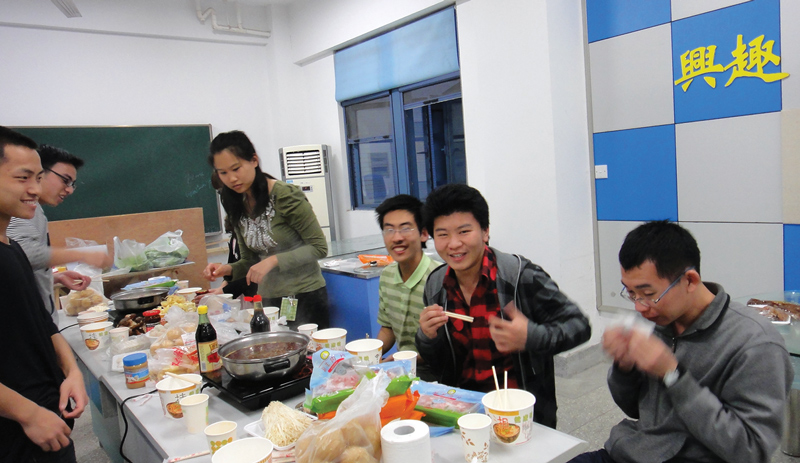SPS in China
Spring
2013
Special Feature
SPS in China
New SPS Chapters Support Chinese Students
By:Elizabeth Hook, SPS Communications Specialist

No two SPS chapters look exactly alike. But physics students tend to share similar interests and needs, whether participating in outreach events or just getting together for pizza.
That’s true here in the United States. It’s also proven true in other countries where SPS has taken on new international chapters in recent years. Some of the latest chapters come from two schools, Southeast University in Nanjing and Sun Yat-sen University in Guangzhou, that have laid the groundwork for SPS in China.
Despite being on the other side of the planet, the SPS chapters in China are very similar to those here in the States. Since its inception on December 20, 2010, the Southeast University chapter has been very active, earning an Outstanding Chapter Award in 2012. Last year the chapter also received an SPS Undergraduate Research Award for a project entitled “Controlled Growth of Graphene by Chemical Vapor Deposition.”
Members in the Southeast chapter participate in physics competitions and outreach events; their favorite is making ice cream using liquid nitrogen. In addition to holding regular meetings, SPS also helps to organize lectures and social outings such as hikes and card games for the students, many of whom now study together.
Says chapter member Zhicheng Liu:
Before our establishment, there was no special place for us to study together. But now we have our own activity room in the department, and most of our members choose to study or do their homework here because they can have somebody to discuss [physics] with. We can even stay overnight if we cannot stop the discussion and are worried about disturbing our dorm mates.
The chapter is excited about its new members, many of whom are actually engineers! “We have 39 members in our chapter now, and nearly half of our members come from engineering schools,” says Liu. “This means we have a chance to communicate with students in different majors. We provide a platform to bridge physics and engineering students.”
While this ratio is a little higher than that of a typical SPS chapter in the United States, it is in line with the organization’s goal to bring together all students interested in physics, even those studying other fields such as engineering, biology, or chemistry.

The SPS chapter also helps send students to professional physics conferences abroad. Six attended the 2011 AAPT summer meeting in Omaha, NE. Last November, a delegation from the chapter traveled more than 11,000 miles to the 2012 Quadrennial Physics Congress, hosted by Sigma Pi Sigma, in Orlando, FL. Recognized as the participants who had traveled the farthest to attend, the students toured NASA’s Kennedy Space Center, went to workshops and plenaries, and presented research posters.
“Attending the 2012 PhysCon was definitely an unforgettable trip,” says Yulu Liu, who snagged an honorable mention in the APS Forum on Physics and Society, Outstanding Student Poster Award category. “The workshops and poster sessions were our favorites. Even though there was a little problem with our communication with our American peers, we enjoyed the kind of free atmosphere for discussion. It was really amazing!”
Southeast is the first but not the only chapter in China. In 2012 SPS added a Sun Yat-sen University chapter. Thanks in part to advice from Southeast University on how to apply and get started, the new chapter is now in full swing.
“We may be hosting the annual FuLan’s Science Fair this year, and we will have our own academic tournament for students, and other kinds of local activities,” says chapter member Gustav Ho. //
